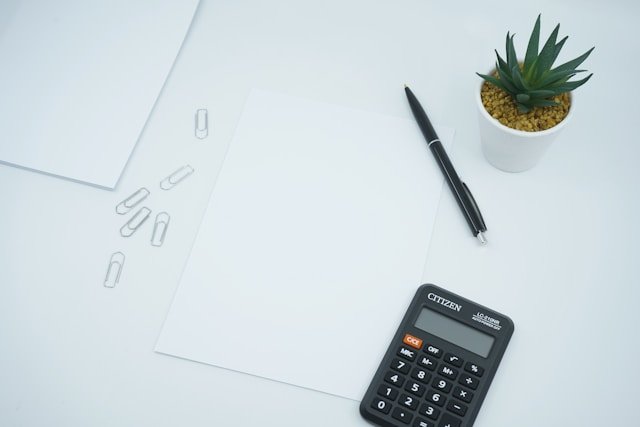Depreciation is an essential factor in the process of capital budgeting. It allows companies to consider the slow wear and tear that occurs to their investments over time. This is important when making investment decisions that last a long time and strategically arrange the distribution of resources. This article will examine the essential depreciation factors within capital budgeting. It will shed some light on its definition, the calculation method, and the significant impact it has on investments.
Understanding Depreciation
Depreciation, in its essence, involves the gradual spreading of the cost of an asset over its use. It is crucial to reflect on the slight decrease in the value of the investment due to various factors, including damage and wear, advancements in technology, and the onset of obsoleteness. When you recognize the diminishing value, companies gain an accurate knowledge of their profits and can make more informed choices in budgeting capital.
Depreciation’s Role in Capital Budgeting
Within the context of capital budgeting, depreciation takes on the role of methodically apportioning the cost of a long-term asset across its useful life. Acting as a non-cash expense, it signifies the wear and tear, obsolescence, or value reduction an asset undergoes over time. This concept is indispensable in capital budgeting, serving as a compass for businesses to gauge the authentic cost of an asset and comprehend its profound implications on overall profitability.
The Crucial Role of Depreciation Accounting in Capital Budgeting
- Precision in Financial Analysis
Accounting for depreciation in capital budgeting is fundamental for accurate financial analysis. Depreciation embodies the gradual decline in the value of assets over time, considering factors like wear and tear and obsolescence. The inclusion of depreciation expenses in capital budgeting calculations provides businesses with a realistic financial perspective, aiding in well-informed decisions regarding investments and future projects.
- Facilitating Cost Recovery
Depreciation serves as a mechanism for businesses to recover the cost of assets over their useful life. This systematic allocation of initial asset costs, such as machinery or equipment, over multiple accounting periods ensures proper accounting for acquisition expenses. This approach enables businesses to gauge the profitability and viability of their investments more effectively.
Example: Consider a manufacturing company investing $100,000 in a new machine with a 10-year useful life. Without accounting for depreciation, expensing the entire $100,000 in the year of purchase could significantly reduce profits for that year. However, by depreciating the asset over its useful life, the company spreads the expense over several years, presenting a more accurate financial impact of the investment.
- Unlocking Tax Benefits
Properly accounting for depreciation in capital budgeting can result in tangible tax advantages for companies. Depreciation expenses can be tax-deductible. This leads to a lower taxable income and, consequently, a lower tax burden. This planning method ensures businesses reap the maximum tax benefits and improve cash flow.
Tip: Choosing the right depreciation method is crucial for capital budgeting calculations. Methods like straight-line depreciation, accelerated depreciation (e.g., double-declining balance method), or units-of-production method each have distinct advantages and considerations. Businesses should carefully evaluate the method aligning best with their specific circumstances and financial objectives. You can check out these free depreciation calculator to calculate the depreciation of your asset over a specific period.
- Informed Decisions on Replacement or Upgrade
Depreciation accounting gains significance when deciding whether to replace or upgrade existing assets. Understanding the accumulated depreciation on an asset allows businesses to assess the cost-effectiveness of continuing its use, opting for repairs, or investing in a new and improved version. This evaluation contributes to optimizing resource allocation and ensuring streamlined and efficient operations.
Strategies for Effective Depreciation Management in Capital Budgeting
- Accelerated Depreciation
One proactive approach to depreciation management in capital budgeting involves the use of accelerated depreciation methods. These methods permit a more significant portion of an asset’s cost to be depreciated during the initial years of its useful life. By opting for accelerated depreciation, companies can effectively decrease their taxable income in the early stages, resulting in a reduced tax liability. This strategy proves advantageous when anticipating higher future profits.
Example: A manufacturing company invests $100,000 in a piece of equipment with a 5-year useful life. Instead of employing the straight-line depreciation method, evenly spreading expenses over 5 years, the company chooses the double declining balance method. This accelerates depreciation, yielding higher expenses initially and lower expenses in later years.
- Depreciation Tax Shields
Leveraging depreciation tax shields is another savvy strategy. These shields denote the tax savings derived from deducting depreciation expenses from taxable income. By capitalizing on these shields, companies effectively diminish their tax obligations, freeing up cash flows for alternative investment opportunities. This becomes particularly advantageous in high tax brackets.
Example: A real estate company invests $1 million in a commercial building. By claiming depreciation expenses over the building’s useful life, significant tax deductions are obtained. These deductions lower taxable income, resulting in reduced tax payments and enhanced cash flows for further investments.
- Replacement Analysis
Incorporating a replacement analysis into depreciation management proves invaluable. This involves assessing the cost-effectiveness of replacing an existing asset or continuing its use. Factors like maintenance costs, efficiency, and technological advancements are considered, enabling companies to make informed decisions that minimize depreciation expenses.
Example: An airline company contemplates replacing its aging fleet with more fuel-efficient models. Through a replacement analysis, the company compares the operating and maintenance costs of the current fleet with those of new planes. If cost savings from reduced expenses outweigh the depreciation costs of new planes, replacement becomes a strategic move.
- Lease or Rent Assets
Opting to lease or rent assets instead of outright purchase is an alternative depreciation management strategy. By choosing leases or rentals, companies sidestep the necessity to depreciate assets they don’t own. This proves beneficial for assets with short useful lives or those prone to rapid obsolescence, allowing companies to utilize assets without incurring depreciation expenses.
Example: A technology company requires high-performance servers for a specific project and decides to lease them from a data centre. By opting for leasing, the company avoids depreciation expenses and can effortlessly upgrade to newer models as needed.
In conclusion, managing depreciation in capital budgeting involves a nuanced consideration of diverse strategies. From employing accelerated depreciation methods and utilizing tax shields to conducting replacement analyses and opting for leases, companies can effectively minimize and navigate depreciation expenses. These strategies empower companies to optimize capital budgeting decisions and enhance overall financial performance.


